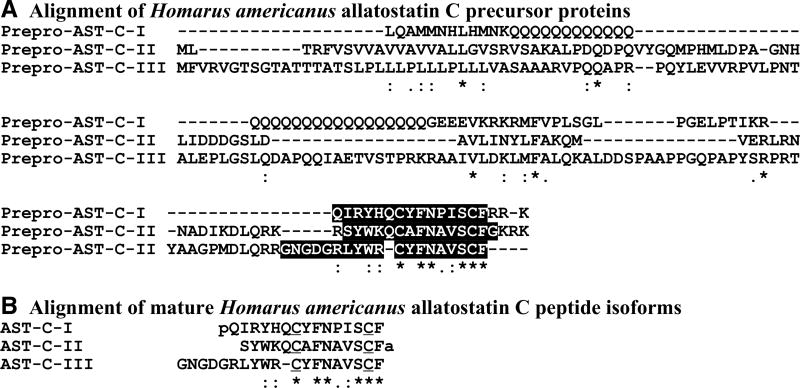Fig. 1.
Alignment of Homarus americanus AST-C precursor proteins and mature AST-C peptide isoforms. a Alignment of prepro-ASTC I, II and III. The sequence of prepro-AST-C I is that reported in Christie et al. 2015, while those of prepro-AST-C II and prepro-ASTC III are those reported in Christie et al. 2017. b Alignment of the structures of mature AST-C I, II and III peptides. In the line immediately below each sequence grouping, “*” indicates identical amino acid residues, while “:” and “.” denote amino acids that are similar in structure between sequences. In a, the portion of each preprohormone that gives rise to the AST-C peptide has been highlighted in black. In b, the “pQ” at the amino-terminus of AST-C I indicates the presence of pyroglutamic acid, while the “a” at the carboxyl-terminus of AST-C II indicates the presence of an amide group; in all three AST-C isoforms, the cysteine residues involved in disulfide bridging have been underlined. All alignments were done using the online program MAFFT version 7 (http://mafft.cbrc.jp/alignment/software/; Katoh and Standley 2013)

